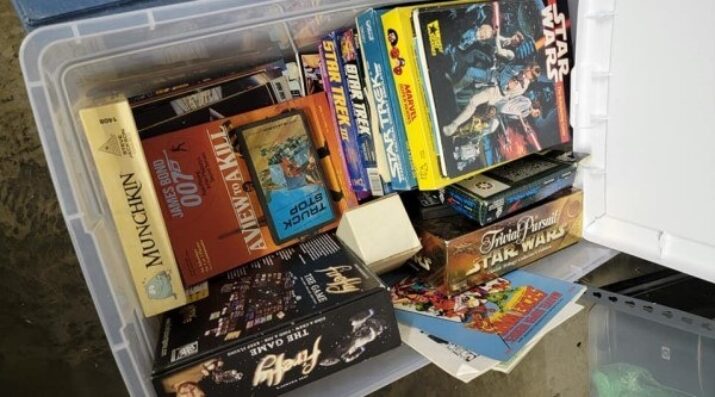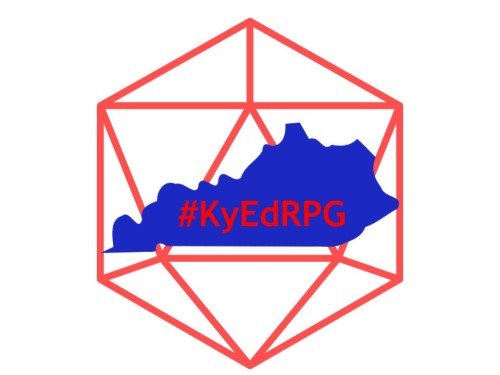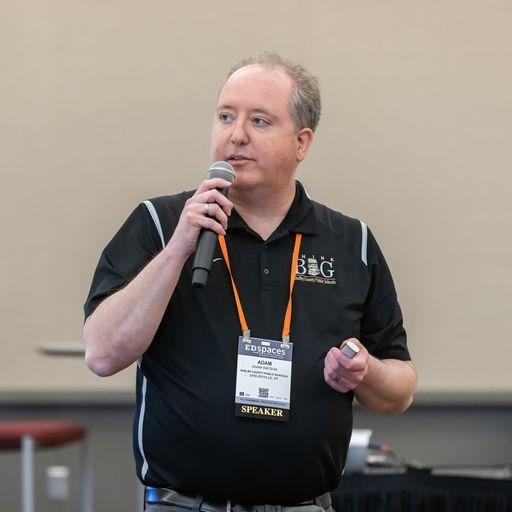Dungeons, Dragons, and Durable Skills: How Tabletop Role-Playing Games Make SEL and Academics into an Adventure for Students
Topics

We’ve all had the experience of truly purposeful, authentic learning and know how valuable it is. Educators are taking the best of what we know about learning, student support, effective instruction, and interpersonal skill-building to completely reimagine schools so that students experience that kind of purposeful learning all day, every day.
Dungeons & Dragons and other role-playing games can have a positive impact on the student experience, social-emotional learning, and academic performance.
As you read this article, a pop culture behemoth that is a half century old is stomping across silver screens across the world: the movie Dungeons & Dragons: Honor Among Thieves was just released on March 31. It’s based on the titular tabletop role-playing medieval fantasy game that was engaging the imagination of millions decades before Peter Jackson dared to film a Tolkien movie or before an internet existed where players could cast spells and swing swords online. While Dungeons & Dragons—often abbreviated as D&D or DnD—has never really gone away, the production of a big budget Hollywood film of the property is a new highwater mark of the game’s recent renaissance, fueled in no small part by the characters of Netflix’s Stranger Things and their enthusiastic appreciation of dungeon crawling while pretending to be fighters and wizards as they roll polyhedral dice. One popular phenomenon has fanned the flame of another.
However, this is a site about pedagogy, not pop culture. So our story really begins back in July 2022, at a San Diego Comic-Con panel focused on the D&D movie. One of the lead actors of the film, Chris Pine, made a compelling point about the power of such role-playing games (RPGs) in education:
“Honestly, I think a D&D class or activity at every school would be a brilliant idea. You get all sorts of disparate people to sit down and even if they have nothing in common, it’s virtually impossible not to get sucked into the fun of the game.”
As a Kentuckian who has gone from a young man rolling the dice for many a TTRPG (tabletop RPG), to a classroom teacher, to a district digital learning coordinator, to a deeper learning design specialist, I couldn’t agree more with Mr. Pine. For years now, I’ve been sharing how game-based learning in general, and role-playing games in particular, can have a positive impact on the student experience, both academically and social-emotionally. In 2022, I launched the website Kentucky Educators for Role-Playing Games (#KyEdRPG) as a way of curating resources and stories that show how RPGs can be integrated into academic instruction and school culture, with examples at the global and local level. So let’s take a journey, you and I. You’ve likely entered a dark forest of unfamiliar pedagogy, feeling some trepidation and uncertainty about role-playing games in education. In this clearing, sit by me at the NGLC campfire, and let me pull from my Bag of Holding a sampling of the resources and stories I’ve collected. (And new treasure is also offered on Twitter, Instagram, and Facebook!)

Do Role-Playing Games Work in School?
It may surprise you that RPGs and TTRPGs have been the subject of scholastic attention and research for many years. (Indeed, the recognition of the power of play—particularly in education—is not a new concept, and for a primer on that topic, I happily point you to the work of some local Kentucky friends.) As an example, The International Journal of Role-Playing is an online academic publication that has been publishing annual issues going back to 2008. While the scope and topics of its peer-reviewed articles on RPGs often reach beyond education, you'll find some examples focused on K-12 instruction.
The Reacting Consortium is a higher ed program begun at Barnard College (New York) in 2012, where a multitude of various RPG modules (“Reacting to the Past”) have been created around moments in history. College students are given roles, learn their parts, and do critical readings in preparation to play the multi-day modules in class. Watch their overview video, and you can read an example of a secondary teacher’s integration of the curriculum in the blog entry “Introducing Reacting to the High School Classroom.”
The American Library Association has a “Games and Gaming” member group that helps empower librarians to promote and support game-based learning; this school year’s focus has been on TTRPGs, with a recent day-long streaming webinar on the subject that coincided with the date of the world premiere of the D&D movie. In an article on the site, Jake Ciarapica (a librarian in Maryland) offers great advice on how to handle the challenges of running role-playing game sessions on an ongoing basis when player participation can be inconsistent and many are seeking a "taste" without being well versed in the rules.
Are you wondering if there is data that shows how TTRPGs can improve academic performance? Look no further than Kade Wells, a South Dakota middle school ELA teacher who uses D&D as the entire instructional framework for his class. In a webinar from a series by the International Literacy Association on the impact of D&D on reading skills, Wells described NWEA MAP results that showed evidence how his approach elicits results: “Every single time my kids took a [MAP] test, they doubled in growth.” This growth was well above what other students in the same school achieved. And lest you think that TTRPGs are just for secondary students, in the same video above, elementary educator Emilie Rayner discusses how incorporating D&D has increased her students’ reading as well.
Lastly, foundry10 (collaborating with the role-playing game therapy group Game to Grow) just published a white paper on a research study conducted on how TTRPGs can influence social-emotional learning (SEL). The findings affirmed a positive impact:
“The imaginative world of TTRPGs creates a degree of separation from the real world allowing youth to learn and grow in a low-stakes environment. As education moves towards more creative forms of learning—focusing on projects, play, collaboration, and creativity—there is an opportunity for TTRPGs to be used more broadly as a way to learn about SEL skills like regulation, collaboration, planning, perspective taking, and pretend play, as well as group process skills like problem solving, conflict resolution, delegation, strategy, and more.”
| What Are Role-Playing Games (RPGs) and Tabletop Role-Playing Games (TTRPGs)? |
|
RPGs are imaginary scenarios where participants pretend to be a character usually to achieve a goal, with the situation often facilitated by a “referee” who may also set and narrate the scene (“You walk onto a spaceship...”) while also playing the parts of any characters not enacted by the participants (Non-Player Characters, or NPCs). While this may suggest actors in roles performing from a script, it is unlike a theatrical play where the ending is fixed and known. It is closer to stage improv; the story itself is actually co-created by the participants, giving the “player characters” (PCs) real agency in what unfolds.
A TTRPG includes these RPG elements but goes further and is more codified. The outcome of random encounters such as opening a locked door or fighting a dragon are often determined by a roll of the dice; in most systems, the total of the dice must meet or exceed a fixed number in order to succeed, helped or hindered by the level of the character’s quantified abilities and skills. TTRPGs often use other materials to establish the imaginary scene, such as token miniatures to represent the PCs and NPCs, and gameboard maps to help determine movement and spatial awareness. The referee in TTRPGs—often called a game master (GM) or dungeon master (DM)—not only acts as the narrator who frames the story and plays the NPCs, but is the arbitrator of rules usually first established by published materials for that particular game. Based on these assumptions, we can discern some key distinctions between RPGs and TTRPGs. Players in RPGs could possibly move around in real space as their character in “live-action,” with success or failure often determined cooperatively or by an agreed set of simple rules instead of a system like dice rolling. TTRPGs utilize more of a “theater of the mind” approach and have more structured rules to govern outcomes; participants in TTRPGs are also more spatially fixed with players usually sitting around an actual table or logging into an online virtual Zoom-like platform with digital dice and maps. However, in both RPGs and TTRPGs, players cooperating and working toward a common goal is often promoted, unlike a typical board game where competition between players is the norm. |
What Are RPG Examples in Kentucky Classrooms and Schools?
While I am glad to share stories about the educational use of TTRPGs in places like New York and South Dakota, I am most excited to celebrate how it is happening in my home state. As a recent Kentucky Teacher article declared, Bluegrass teachers using role-playing games—specifically Dungeons & Dragons—are creating the epitome of “vibrant learning experiences” for students. Here are three stories.
Patrick La Mar had a specific problem: he was looking for a way to make his Manifest Destiny unit more engaging. Already a fan of Dungeons & Dragons, he decided to make a “homebrew” combination of D&D and the old-school video game The Oregon Trail in a TTRPG-like student adventure. Google Slides helped small groups “self-DM” their journey. As La Mar shared in the Kentucky Teacher article above, “If you remember the old computer game, people have different jobs like banker, carpenter. Those can be like the classes in D&D. Obviously certain people are going to have a better time resolving those than others. I just went from there, trying to keep it as simple as I could but still reflecting the ideas and actors of D&D.”
Mary Lowe had a similar instructional situation: how can you incorporate some critical thinking when studying the Age of Exploration? She asked students to take real-life explorers and build them out as D&D characters on the game’s character sheet, complete with ability scores, skills, alignment, equipment, and more. Of course, these choices also had to be defended. Lowe shared how students “went above and beyond in creativity” and “tended to test higher” on the unit summative assessment. The idea of completing such sheets could easily be applied to other contexts, such as analyzing the merits of literary characters.
Justin Gadd runs an ongoing D&D club for his students. But he began running such a club during the pandemic when it had to be virtual. As a sign of its positive impact on SEL during COVID-19, students often remarked that their D&D meetings were the best part of their distance learning; as one student put it, “It’s one of the times I laugh the most all week.” Parents also reached out to let Gadd know how much they appreciated the club, and some even began to play D&D themselves with their children. When I interviewed him, Gadd made some interesting connections between what students accomplish in playing D&D with both the durable skills that make up his district’s Profile of a Graduate as well as applying academic content:
“There is math and probability in the dice rolling, and making those calculated risks based on their character statistics is vital to success. . . . [It also] applies to several of our PoG competencies [such as] Effective Communicator—students have to be able to communicate their actions with the players and DM running the game—[and] Responsible Collaborator [for their] team work!”

How Can You Start Using Role-Playing Games in Your School?
The NGLC campfire is smoldering out. It’s almost time to embark on your instructional quest using tabletop role-playing games. “But,” you ask eagerly, “What is my first step?”
Start small! Like the Kentucky teachers above, try to incorporate the elements of a TTRPG into an upcoming unit or even a single lesson; learning by role-playing not only makes content acquisition more dynamic and engaging, but also can create empathy as students play as characters with different perspectives. Historic scenarios and literary situations could easily be simulated in a RPG, but there are other contents that could have gaming moments. For example, science players may go out on a journey to capture certain “periodic elementals” in order to determine what happens when they come together, or math players can apply their geometric knowledge in order to maximize the areas of effect from a spell. If you want to begin a school club based on a specific game such as Dungeons & Dragons (see pop-out) or Quest, seek resources that are inexpensive or free—and consider partnering with your librarian to help, since the library can be a perfect gathering place for an after-school tabletop adventure.
And we should celebrate a place that gathers, to return to Chris Pine’s words, “disparate people.” Students of all backgrounds should have the opportunity to play roles so they can learn that, despite their perceived differences, they are valuable as individuals, are more alike than they think, and are better when they work as a team. Bring your students away from their desks and sit them around a table to experience academics in a more engaging way. Take a chance on TTRPGs, let your learners harness their creativity, and roll the dice!
| How to Play Dungeon & Dragons with Just a Handful of Silver Pieces |
|
Here is a suggested list of no-cost or low-cost items to initially prepare your learning space for playing D&D. |
|
Learn More
Watch this segment from KET, a statewide PBS station in Kentucky, about role-playing games in education that includes an interview with the author, Adam Watson, along with other Kentucky educators.
All photos courtesy of the author. At the top: The author's bin full of RPGs, many dating back to the 1980’s.




